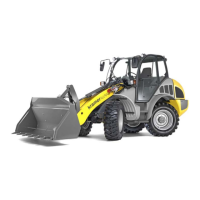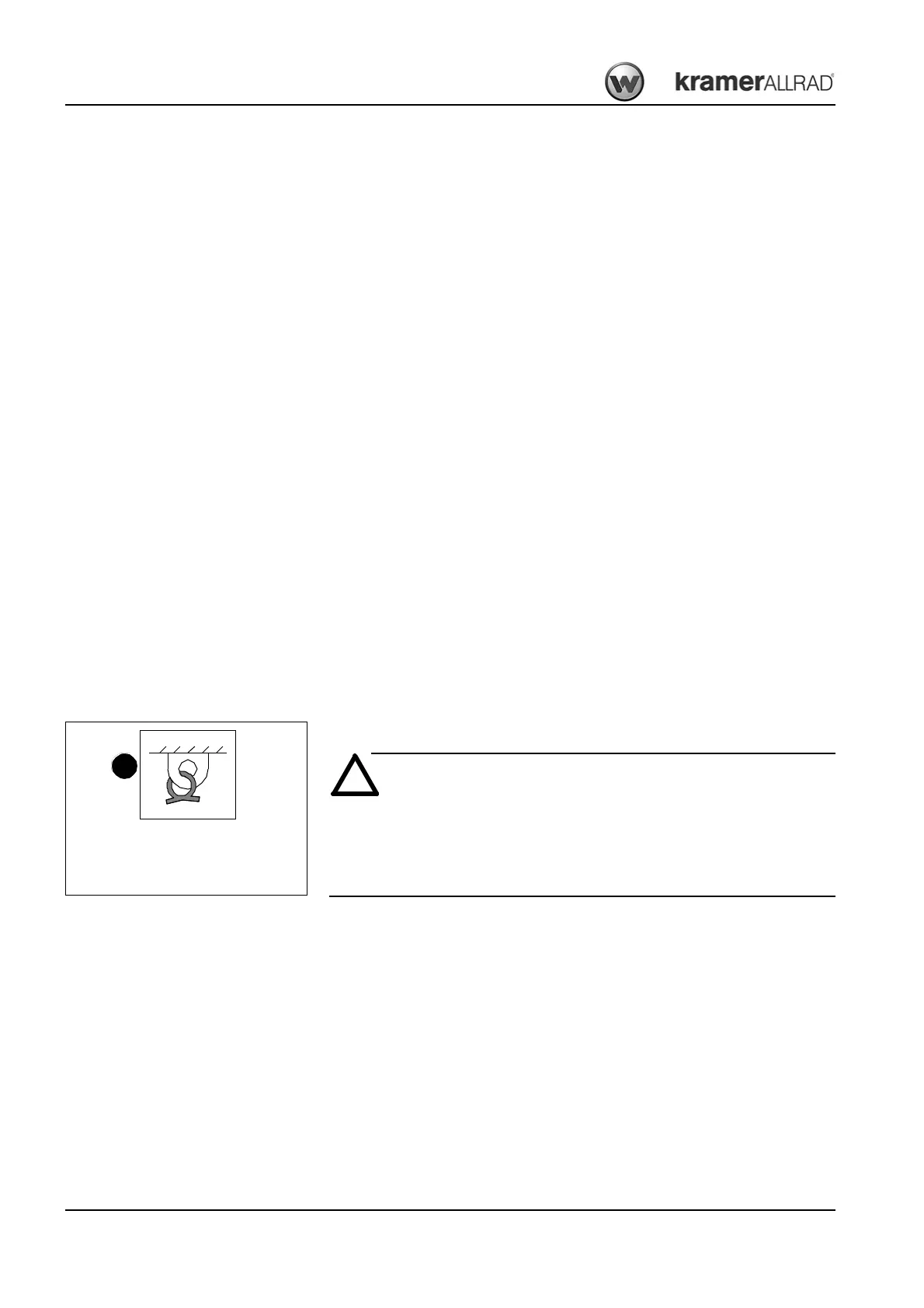3-60 BA 35101/02/03 EN – Edition 1.0 * 35101_02_03b330.fm
Operation
3.45 Loading and transporting the machine on a transport vehicle
Safety instructions regarding loading on a transport vehicle
• The transport vehicle must be of adequate size
➥– see chapter 2 “Transporting, towing, loading” on page 2-9
➥See chapter Specifications, “Machine weights” on page 6-12 for the machine's
dimensions and weights!
• Make sure the authorised maximum height of the transport vehicle is not exceeded
• Remove any mud, snow or ice from the tyres so that the machine can be safely driven
onto the ramps
• Secure the wheel loader against unintentional movement!
• When placing the load on the platform, make sure the load is at the lowest possible
position and that the centre of gravity of the load is in the centre line of the vehicle if
possible (load distribution plan).
• Do not exceed the gross weight rating and the gross axle weight rating when loading
and transporting the machine.
• Make sure the load does not fall short of the minimum axle load of the steering axle,
otherwise the steering behaviour of the vehicle is seriously affected.
• Place partial loads so as to ensure an even load on all axles.
• Store or secure the load with suitable auxiliary means so that it cannot slip, slide, roll,
tip over or fall, or cause the vehicle to tip over under usual transport conditions.
• Usual transport conditions are conditions in the which the brakes are slammed on,
evasive manoeuvres are carried out with the vehicle or in which uneven roadways are
driven on. Auxiliary means are e.g. anti-slip bases and linings, load-securing straps and
chains, clamping beams, protective paddings, nets, edge protectors, etc.
• Depending on the load, adapt your drive speed to the road and traffic conditions and to
the handling of the transport vehicle.
• When using belts and chains, always use the existing tie-down points (symbol A).
➥– see chapter 1 “Machine outside view” on page 1-2
When loading and driving on ramps, the diesel engine can be damaged if the
engine oil level is too low.
☞ Check the oil level of the diesel engine
• The oil level must be visible at the MAX mark of the oil dipstick
A
Fig. 97: Label: eyelets for tying down the machine

